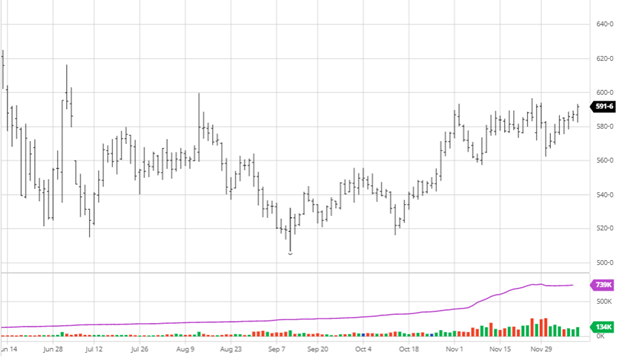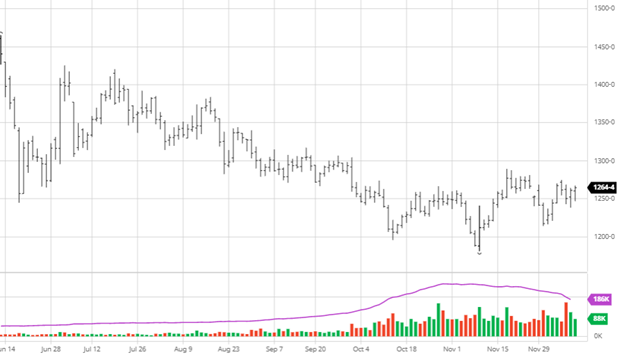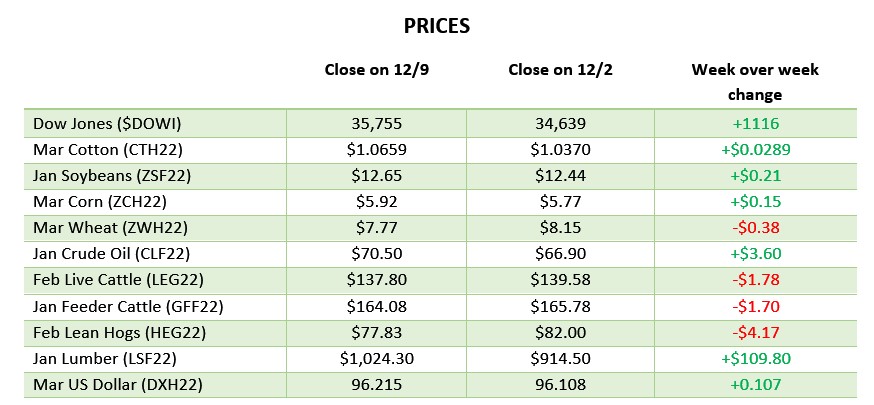AG MARKET UPDATE: DECEMBER 9

This week, corn had a good rally following a couple of big down days last week. The December USDA report was released on Thursday with minimal changes and differences between the numbers and pre-report estimates. World stocks were slightly higher than pre-report estimates at 305.45 million metric tons (304.47 MMT estimate) and marginally higher US stocks. The USDA did not make any adjustments to the South American crop estimates as they remain patient; we should expect next month to see a change. Continue to keep an eye on SA weather as any continued problems could play out in the market heading into the holidays.


Soybeans, like corn, saw a modest bounce following a couple of bad days last week. The expectation of a bearish report proved incorrect as the USDA left the stock numbers unchanged. The exports seem to have been slowing down and remain well short of the Phase 1 deal with China, so we could expect to see the export numbers lowered and ending stocks raised if there is no strong buying into the end of the year. All in all, the report lacked any market-moving fireworks.


Dow Jones
The Dow had a strong week bouncing back from its dip as there were plenty of buyers buying the dip. As fear of the Omicron variant relaxes and positive news on the vaccine fighting this strain, this cycle of the variant worry may have already hit and bounced back in the market. Many analystsare calling for a rally into the end of the year with many firms releasing their top picks for 2022. The CPI numbers will be released at the end of the week and will play out in the market on Friday.
Wheat
Wheat prices have been falling the last week and continued falling after the report. Australia and Canada had larger production than expected. Another important development specific to wheat will be the tensions between Ukraine and Russia, as any escalation would cause problems for wheat exports from Ukraine.
Podcast
For the past year, commodity prices have perpetually soared and continue to trend higher. We’re diving into the fertilizer forecast with a unique guest, Billy Dale Strader, a branch manager for Helena Agri-Enterprises in Russellville, KY., who is truly at the epicenter of the rising fertilizer prices.
Billy Dale planted his agriculture roots on his family-owned farm and has managed regional seed and chemical sales at Helena for the past decade. In this week’s pod, we tackle the big question for farmers and ultimately end-users — is the impact of higher-priced inputs, like seeds, chemicals, and fertilizer, on the supply and demand for the major U.S. crops? Listen or watch to find out!

Via Barchart.com
